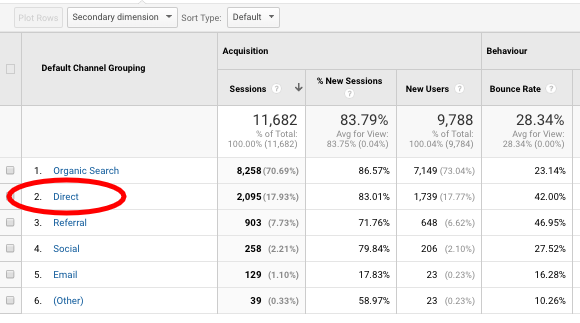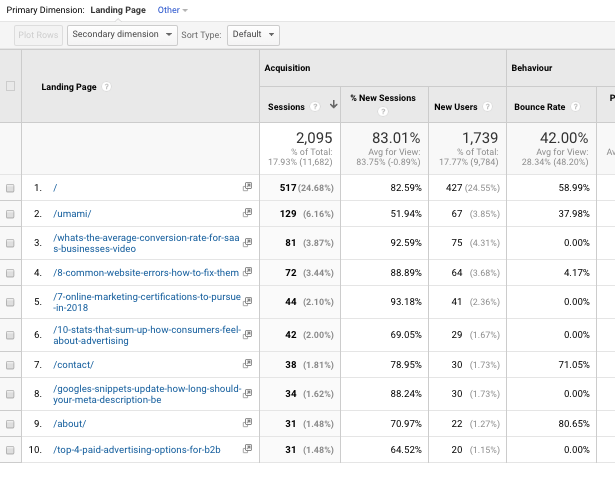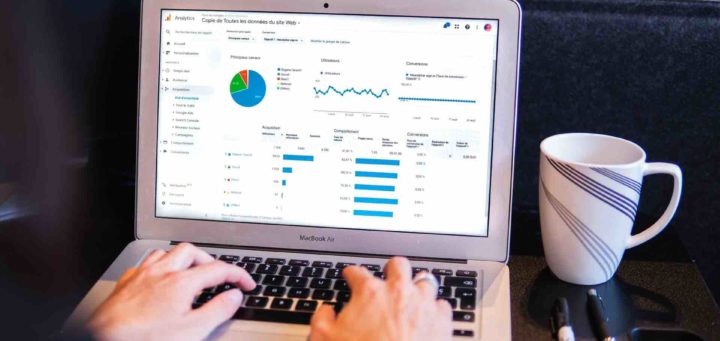Understanding Direct Traffic in Google Analytics
Google Analytics’ acquisition reports detail a number of different traffic channels: organic, email, social, paid, referral….and direct. And we always get asked about direct.
What is Direct Traffic in Google Analytics?
Google Analytics defines direct traffic in a few ways: most often, it’s the result of a user typing your URL into a browser or using a saved browser bookmark to access your site. However, if Google Analytics cannot recognize or determine the exact traffic source of a visit to your site…then they also categorize that as direct traffic as well.
Here are some examples of other instance of direct traffic visits:
- Clicking a link within an offline document, like PDF, Microsoft word, etc.
- Clicking a link within a social media app like Facebook, Instagram or Twitter
- Clicking an untagged link from within an email
- Depending on which email marketing tool you use, some traffic from clicking links within email marketing campaigns
- Accessing the site from a shortened link
- Clicking a non-secure (http) page link on a secure (https) page, as this prevents referrer data from being passed
- Browser issues which can re-class organic search visits to direct
- Missing or broken Google Analytics tracking codes
You can view your website’s direct traffic numbers within your Google Analytics account by going to Acquisition –> All Traffic –> Channels:

Clicking on that “Direct” link will take you to another report that will show you the top landing pages that have received that direct traffic:

This report will help you to understand which pages on your site are receiving the most direct traffic, so you can better optimize those same pages and minimize the level of direct traffic they are receiving.
How can you minimize or fix direct traffic?
Now that you understand where direct traffic can come from and how it’s affecting your traffic sources, here are some steps you can take to reduce or fix “false” direct traffic on your site.
- UTM Parameters: Make sure you tag all of your marketing campaigns with custom campaign variables, or UTM parameters. You should be able to do this automatically within your email marketing software so that future traffic from email campaigns are properly tracked as “Email” sources in your GA traffic reports. You can also use Google Analytics’ Campaign URL Builder tool to easily add these parameters to URLs.
- Migrate to HTTPS: Or if you have already migrated to HTTPS, make sure all HTTP backlinks are redirected to point to HTTPS URLs, which will bring back the referrer data that is stripped when a user clicks a http link from an https site.
- Clean Redirects: Ensure all site redirects are clean, carefully mapped, and avoid chains.
- Audit Analytics Data: Are GA tracking codes missing from any of your landing pages? A thorough audit is always timely in ensuring the integrity of the data you are reporting on your own site or the sites of your clients.
Taking the time to analyze and understand potentially traffic can help you fix issues with your current marketing campaigns and ensure you have the most accurate tracking going forward. On the other hand, actual direct traffic (from those users typing in a URL directly or clicking on a saved bookmark) shows that you have loyal and engaged site visitors who will likely have a higher conversion rate in comparison to visitors through other channels. So you should also do what you can to find out who those direct visitors are and how you can keep them coming back for future conversions.


